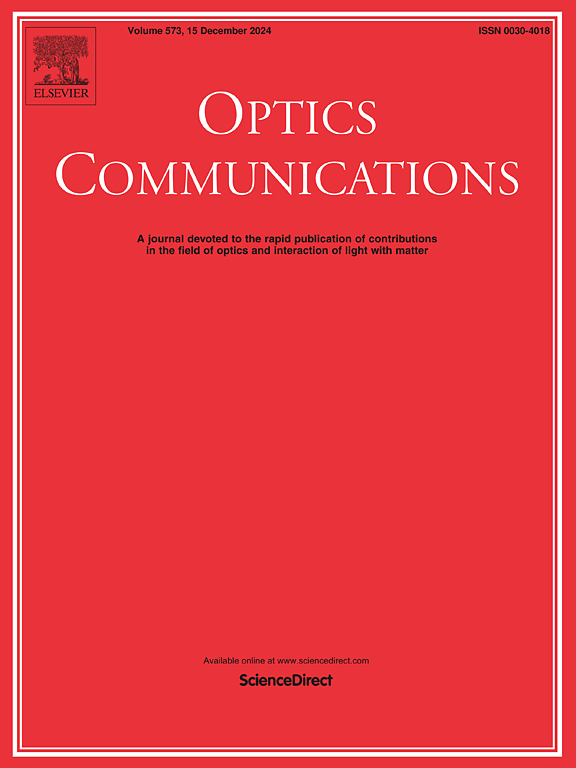通过已部署的多芯光纤电缆使用商用 130-Gbaud DP-QPSK 400 Gb/s 主干 OTN 收发器进行首次实时单跨 106 公里现场试验
IF 2.2
3区 物理与天体物理
Q2 OPTICS
引用次数: 0
摘要
使用多芯光纤(MCF)的弱耦合空分复用(SDM)技术因其巨大的容量潜力和与高速收发器的兼容性而引起了广泛的研究兴趣。在本文中,我们利用商用 DP-QPSK 400 Gb/s 主干光传输网络 (OTN) 收发器,通过部署的 4 芯和 7 芯 MCF 光缆以及 65 个多芯熔接,首次演示了 128 Tb/s 和 224 Tb/s 单跨 106 公里实时现场试验。由于采用了光电多芯片模块(OE-MCM)封装技术的 130-Gbaud DP-QPSK 调制格式,4 芯和 7 芯传输系统仍分别保留了超过 5.5 分贝和 3.5 分贝的 OSNR 余量。MCF 电缆长度为 17.69 千米,内含的 MCF 具有标准的 245 微米涂层,可与标准布线处理兼容。这次现场试验标志着基于 MCF 的弱耦合 SDM 传输系统已经成熟,是在高速地面电缆系统中应用 MCF 的一个重要里程碑。本文章由计算机程序翻译,如有差异,请以英文原文为准。
First real-time single-span 106-km field trial using commercial 130-Gbaud DP-QPSK 400 Gb/s backbone OTN transceivers over deployed multi-core fiber cable
Weak-coupled space-division multiplexing (SDM) technique using multi-core fibers (MCF) has attracted great research interests due to its huge capacity potential and compatibility with high-speed transceivers. In this paper, we demonstrate the first real-time 128 Tb/s and 224 Tb/s single-span 106-km field trial over deployed 4-core and 7-core MCF cable with 65 multi-core fusion splicing using commercial DP-QPSK 400 Gb/s backbone optical transport network (OTN) transceivers. The 4-core and 7-core transmission systems still reserve with more than 5.5-dB and 3.5-dB OSNR margins respectively thanks to the 130-Gbaud DP-QPSK modulation format enabled by optoelectronic multiple-chip module (OE-MCM) packaging technique. The MCF cable has a length of 17.69 km and the contained MCFs are with standard 245-μm coating, which enables the compatibility with standard cabling processing. This field trial marks the maturity of MCF-based weakly-coupled SDM transmission systems and is an important milestone towards the implementation of MCF in high-speed terrestrial cable systems.
求助全文
通过发布文献求助,成功后即可免费获取论文全文。
去求助
来源期刊

Optics Communications
物理-光学
CiteScore
5.10
自引率
8.30%
发文量
681
审稿时长
38 days
期刊介绍:
Optics Communications invites original and timely contributions containing new results in various fields of optics and photonics. The journal considers theoretical and experimental research in areas ranging from the fundamental properties of light to technological applications. Topics covered include classical and quantum optics, optical physics and light-matter interactions, lasers, imaging, guided-wave optics and optical information processing. Manuscripts should offer clear evidence of novelty and significance. Papers concentrating on mathematical and computational issues, with limited connection to optics, are not suitable for publication in the Journal. Similarly, small technical advances, or papers concerned only with engineering applications or issues of materials science fall outside the journal scope.
 求助内容:
求助内容: 应助结果提醒方式:
应助结果提醒方式:


